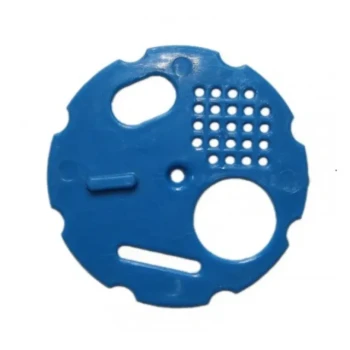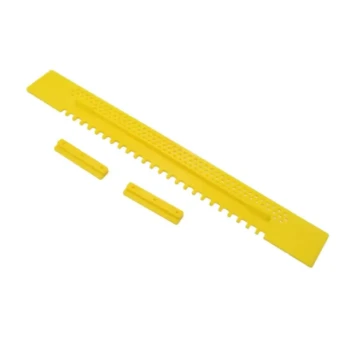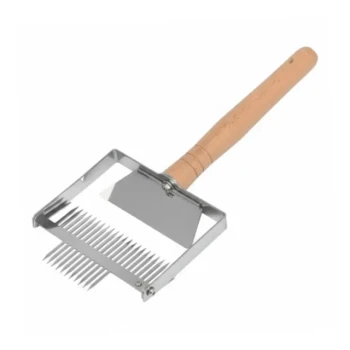For a standard wooden entrance reducer, the notch must always face upward, toward the main hive body. This orientation is not a matter of preference; it is a critical detail for ensuring proper hive function and the colony's survival, particularly through the winter.
The position of an entrance reducer is a simple but vital detail. Placing the notch up prevents it from being blocked by an accumulation of dead bees, ensuring the hive remains ventilated and accessible for the colony.
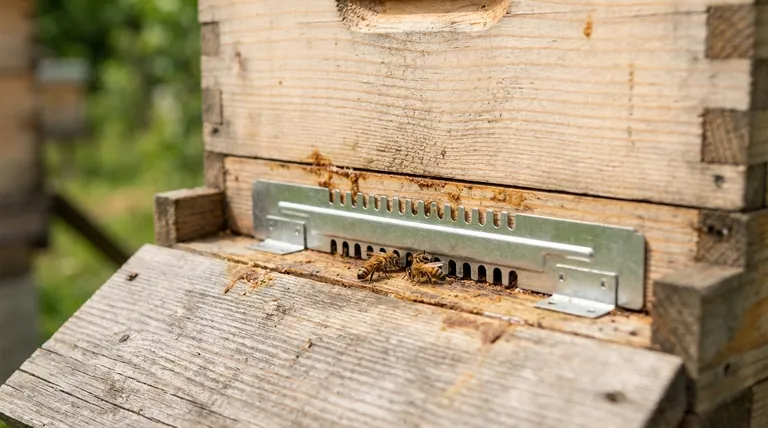
The Core Principle: Why 'Notch Up' is Non-Negotiable
Positioning the entrance reducer correctly solves a fundamental physics problem inside the hive. During cold periods, bees cluster for warmth above the entrance, and any bees that die will naturally fall to the bottom board.
Preventing a Deadly Blockage
The primary reason for the "notch up" rule is to prevent the entrance from being sealed off by dead bees.
If the notch faced down, it would act as a dam. Dead bees would pile up against the reducer from the inside, quickly blocking the small opening.
An upward-facing notch creates an exit above this potential accumulation, ensuring the opening remains clear even if there is a layer of debris on the bottom board.
Ensuring Critical Airflow
A blocked entrance is a death sentence for a colony. It traps carbon dioxide and moisture inside the hive.
Proper ventilation is essential for preventing mold and managing humidity. A clear, upper-oriented notch allows for the passive exchange of air, which is vital for the colony's health.
Facilitating Cleansing Flights
Bees must be able to exit the hive on warmer winter days for "cleansing flights" to void waste.
A blocked entrance traps them inside. The "notch up" position guarantees they have a reliable exit path when the opportunity arises.
The Broader Role of the Entrance Reducer
Understanding why you are using a reducer in the first place provides context for its proper use. It serves two main functions: defense and environmental control.
Defending the Colony
A large, open entrance is difficult for a small or weakened colony to defend.
By reducing the entrance size, you shrink the "front door" that guard bees must protect from robbing bees, wasps, and other pests. This is especially crucial for new packages, nucs, and weaker hives.
Regulating Temperature
A smaller opening helps the colony maintain a stable internal temperature and humidity.
This reduces the energy the bees must expend to heat the brood nest, conserving precious food stores, especially during autumn and winter.
Common Pitfalls to Avoid
While essential, an entrance reducer can cause problems if misused or forgotten.
The Risk of a "Traffic Jam"
Leaving an entrance reducer on a strong, populous colony during a major nectar flow is a common mistake.
It creates a bottleneck that slows down foragers, reduces the hive's efficiency, and can contribute to overheating. Reducers should typically be removed once a colony is strong and the main nectar flow begins.
Forgetting Upper Ventilation
An entrance reducer is only one part of the hive's ventilation system.
Especially in winter, relying solely on the small reducer opening for airflow can lead to excess moisture buildup. Ensure the hive has some form of upper ventilation or entrance to allow moist air to escape.
Making the Right Choice for Your Goal
Most wooden reducers have two different notch sizes. The one you choose depends on the season and your specific objective.
- If your primary focus is overwintering a colony: Use the smallest notch facing upward to maximize heat retention and defense while ensuring the entrance remains clear of dead bees.
- If your primary focus is installing a new package or nuc: Use the larger notch facing upward to give the small, growing colony a defensible entrance without restricting traffic too severely.
- If your primary focus is stopping active robbing: Immediately switch to the smallest notch facing upward to give your bees the best possible chance to guard their home.
Properly positioning your entrance reducer is a simple action that has a profound impact on your colony's health and resilience.
Summary Table:
| Goal | Recommended Notch Position & Size | Key Benefit |
|---|---|---|
| Overwintering a Colony | Smallest notch, facing UP | Maximizes heat retention, prevents blockage by dead bees. |
| Installing a New Package/Nuc | Larger notch, facing UP | Provides a defensible entrance for a small, growing colony. |
| Stopping Active Robbing | Smallest notch, facing UP | Gives guard bees the best chance to defend the hive entrance. |
Equip your apiary with the right tools for success. Proper hive management starts with reliable equipment. HONESTBEE supplies durable, well-designed beekeeping supplies and equipment—including entrance reducers—to commercial apiaries and beekeeping equipment distributors through our wholesale-focused operations. Ensure your colonies thrive in every season. Contact HONESTBEE today to discuss your wholesale needs and strengthen your beekeeping operation.
Visual Guide
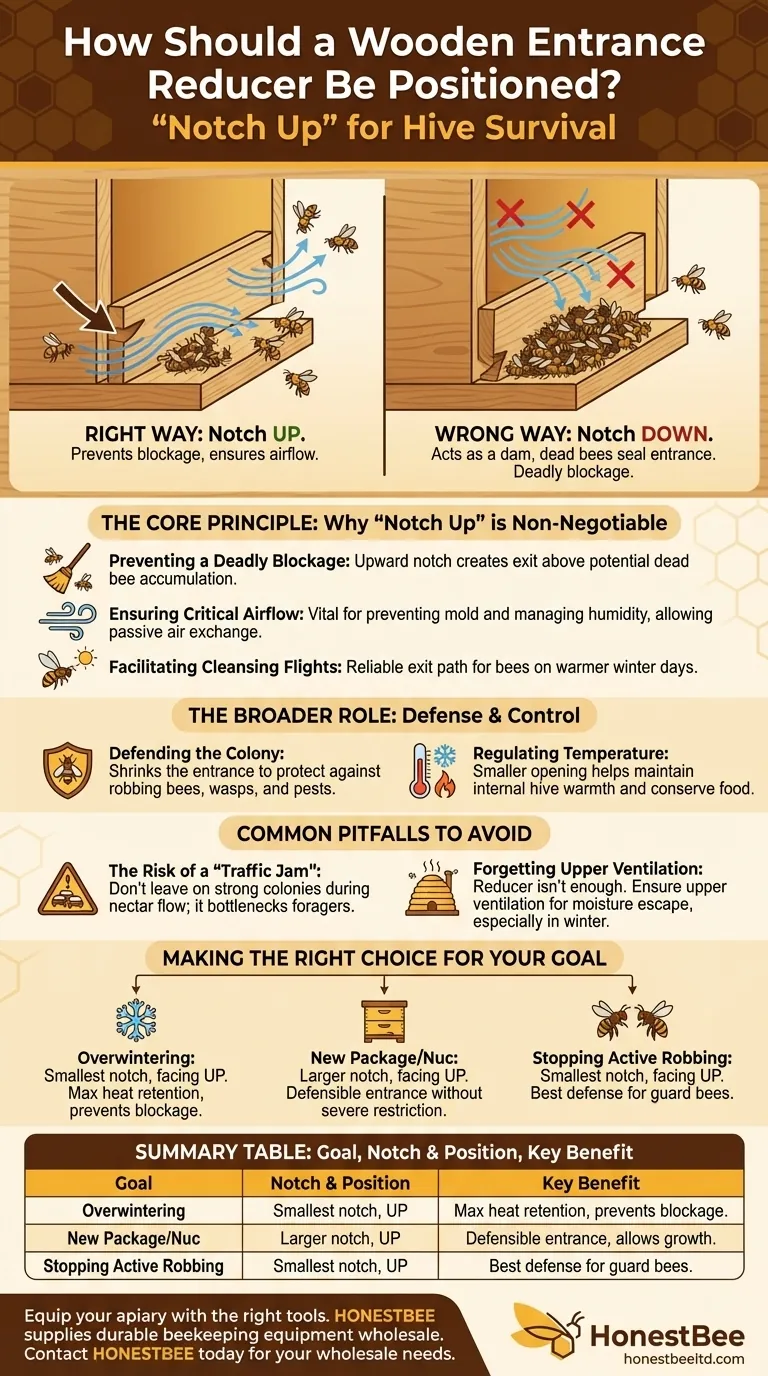
Related Products
- Beehive Entrance Reducer Guardian Metal Hive Entrance for Bees
- Multi-Functional Sliding Hive Entrance for Beekeeping
- Multi-Functional Rotary Hive Entrance Disc for Beekeeping
- Professional Reversible Beehive Hive Entrance
- Professional Galvanized Hive Strap with Secure Locking Buckle for Beekeeping
People Also Ask
- What happens if you seal an entrance to a bee hive? Avoid a Costly Structural Disaster
- What are the features of the side with oblong holes in the entrance reducer? A Guide to Hive Defense & Health
- What should be done after transferring frames to the new hive? Essential Steps for a Secure Colony
- What size is the entrance hole in a native bee hive? The 13mm Standard for a Thriving Colony
- What are the different entrance sizes for an 8 or 10-frame Langstroth hive? A Guide to Seasonal Management


